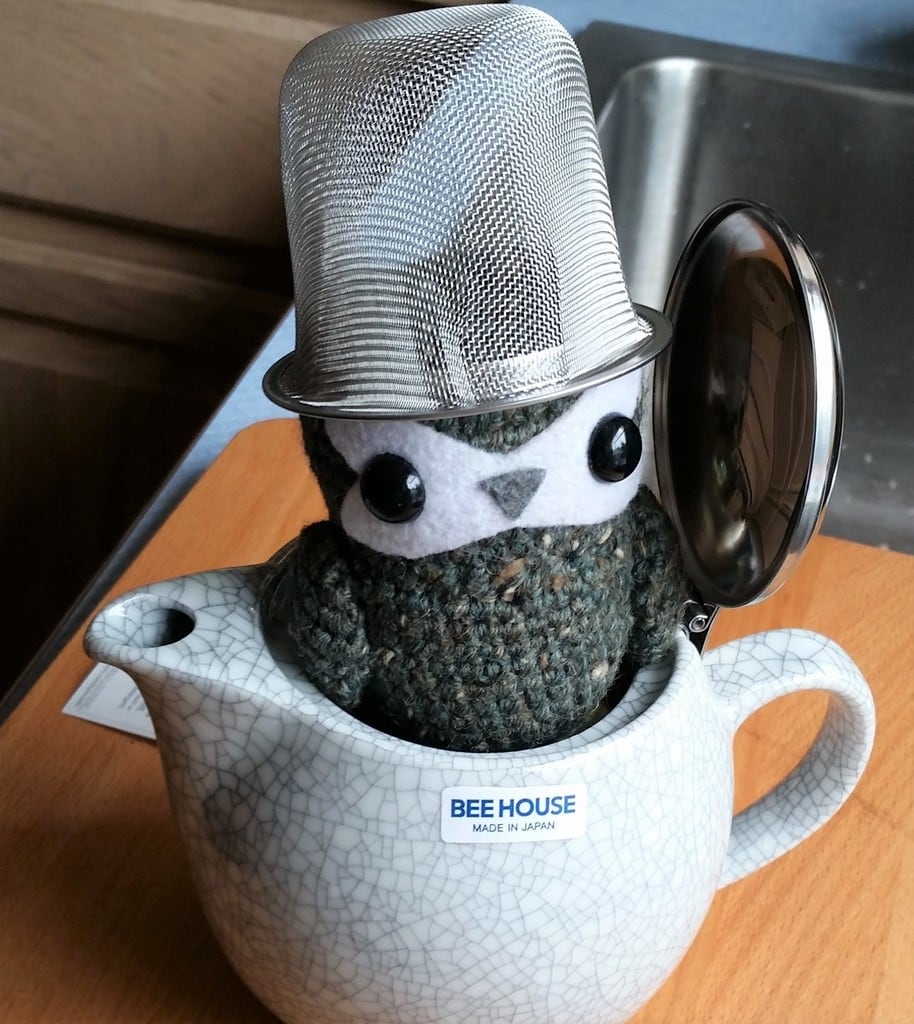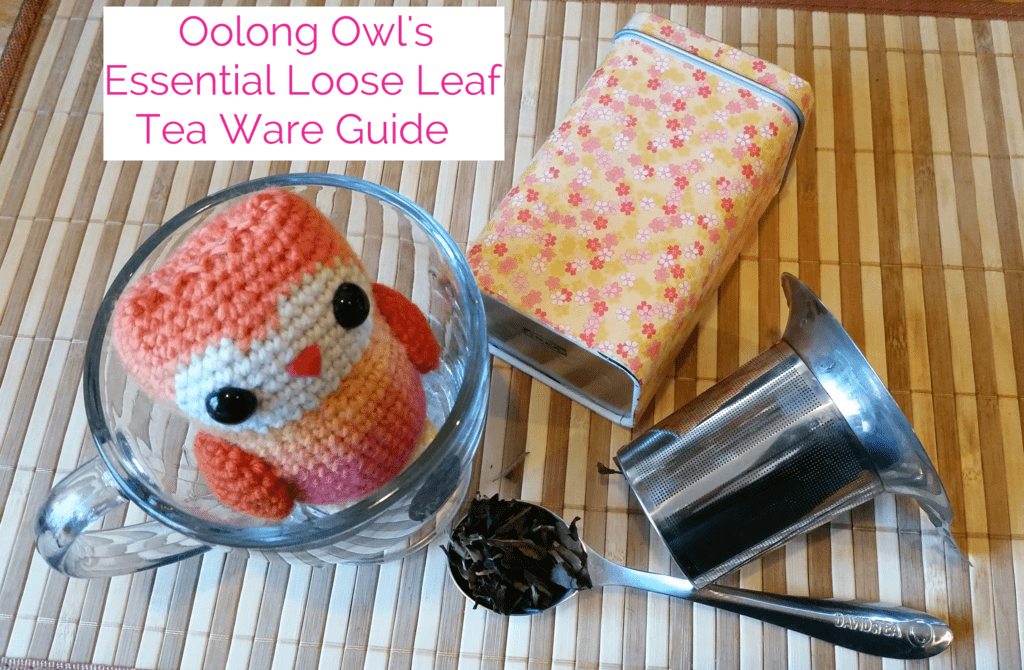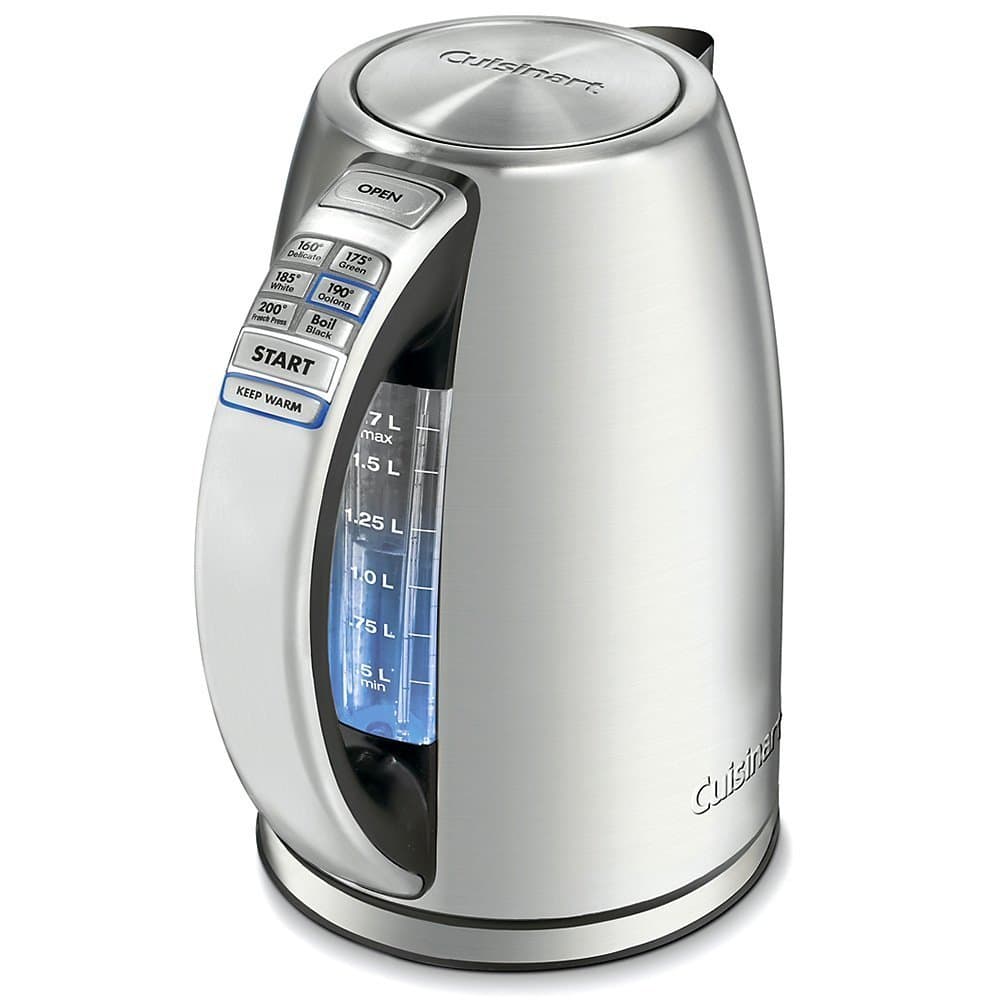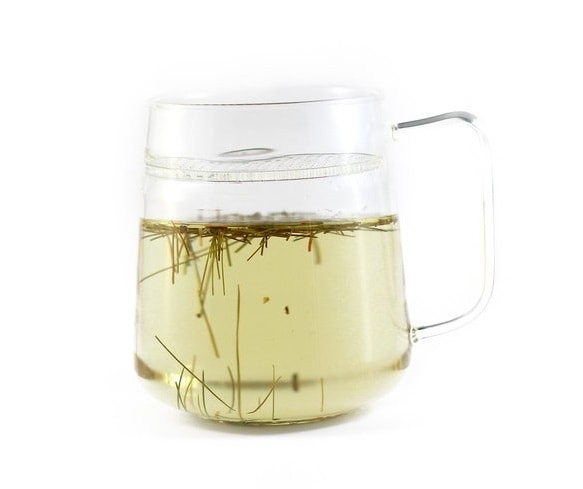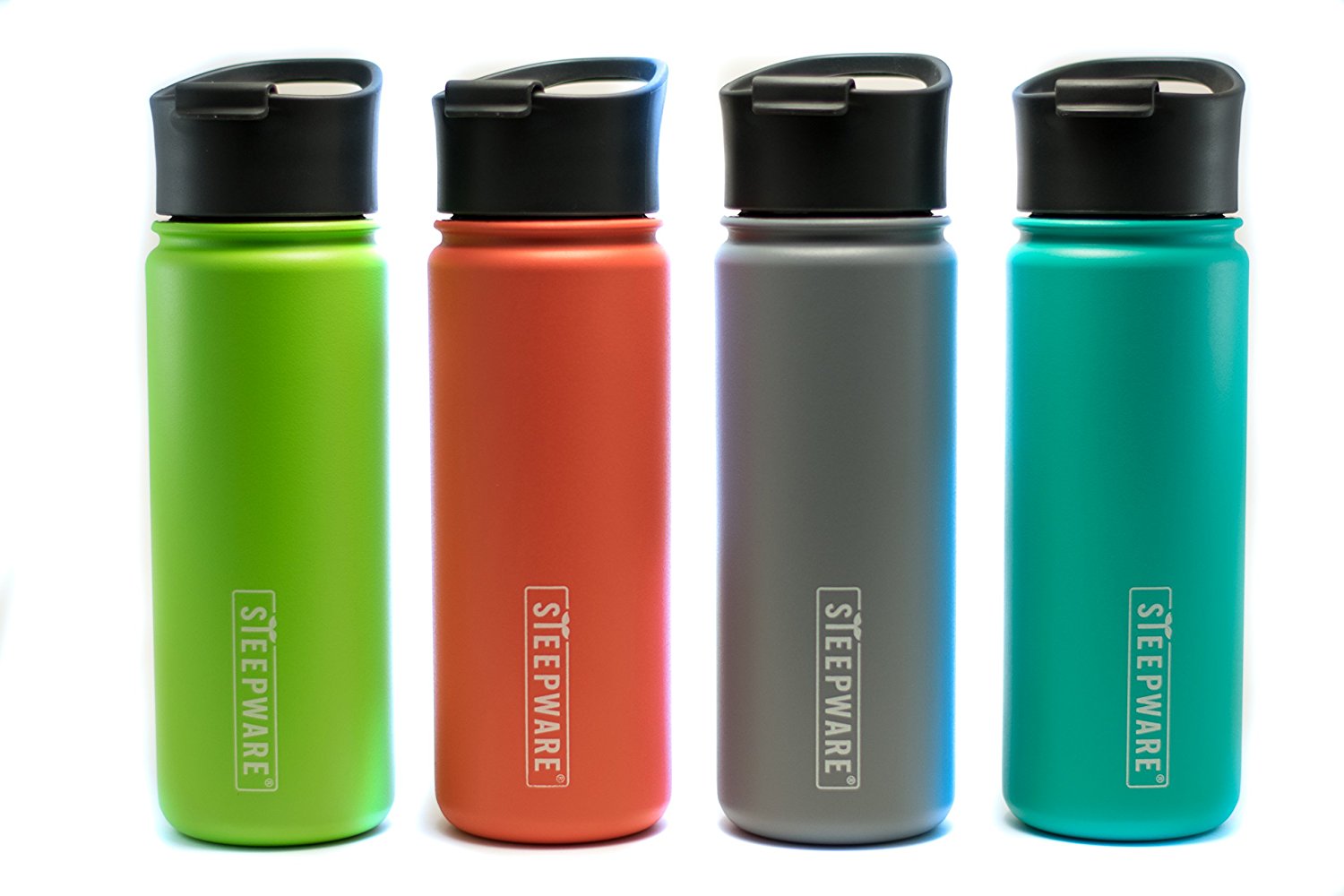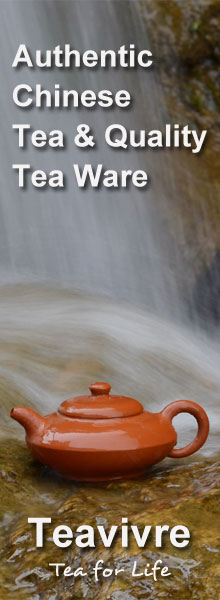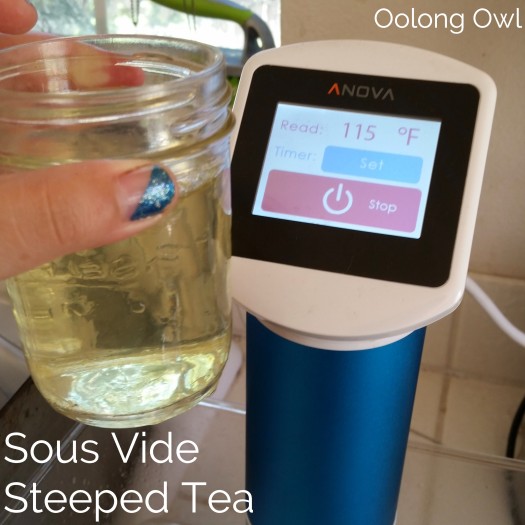
I love my Sous Vide circulator. I have the Anova One and I don’t know how I cooked without it. A sous vide circulator heats water to your desired food temperature, and you cook your food (vacuum packed normally) in the water. Being able to cook something with precise temperature makes for amazing food as it will never be over cooked or dried out. My perfect steaks, chicken breast, pork chops and ribs are the envy of my dinner guests. If you don’t know about sous vide, I suggest checking out Chef Steps for more information.
Anyways, I have wondered what tea would taste like in a controlled temperature environment. I mean, I use a variable temperature kettle, but some heat is lost when poured into a mug. The temperature will also drop over time as the tea steeps. There are steps we do to ensure less water temperature drop – like preheating tea ware, covering the vessel, tea cozies and use of tea ware that is made of materials that will hold heat best. However, there is still error, plus you are fighting environment temperature. If I made tea in the sous vide, I think I could minimize temperature errors.
Sometimes when I compare other fellow tea lovers with tea tastings notes with my own, we aren’t tasting the same notes and intensity of flavor despite using the same methods – maybe water temperature fluctuations are to blame? I bet steeping tea in a controlled temperature environment, like in a sous vide, tea would be more consistent in flavor.
Sous Vide Tea
For this experiment, I selected a tea that would be most beneficial in the sous vide – Green Tea, most notably Gyokuro. This Japanese green is very delicate, sensitive to heat and instructions often suggest 110f to 120f (43c to 48c) water temperature, compared to the common green tea steeping temperature of 175f (79c).
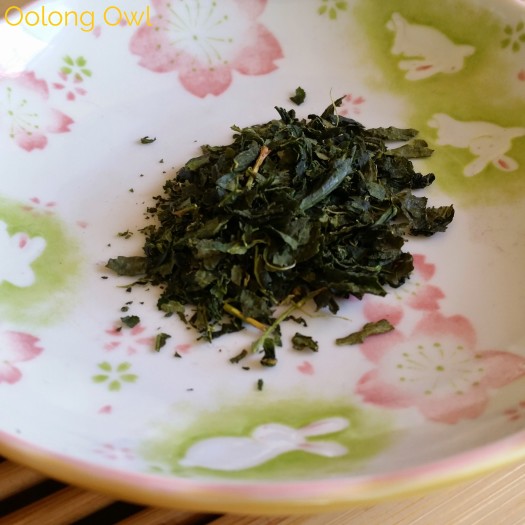
The biggest annoying I have with making gyokuro is despite having a $100 variable control temperature kettle, it only goes as low at 160f. Watching your hot water cool SUCKS. People will do stuff like pour the water back and forth or add something to cool it, but that’s annoying. I’ve actually been cold brewing my gyokuro because I could not be bothered watching water cool.
I set my Anova One to 115F, the middle ground of 110F and 120F.
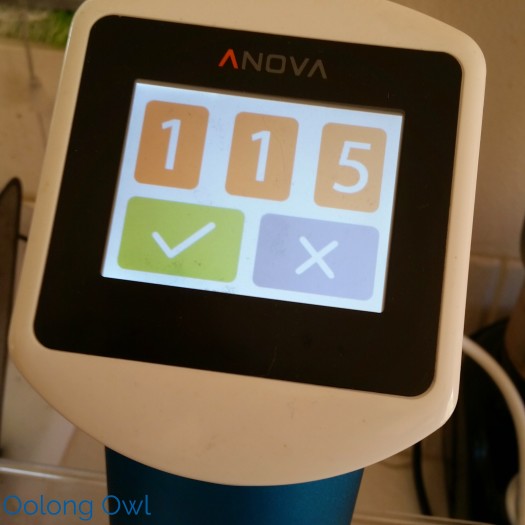
As I turned on the Anova, I added my filtered water to a 8oz mason jar placed it in the sous vide. To ensure the water level on the sous vide goes past the water level on the jar – I did about 1″ head space. Too low of water in the mason jar and it will flip over! I also turned the vent to the back on my circulator to make sure there’s less water bath movement.
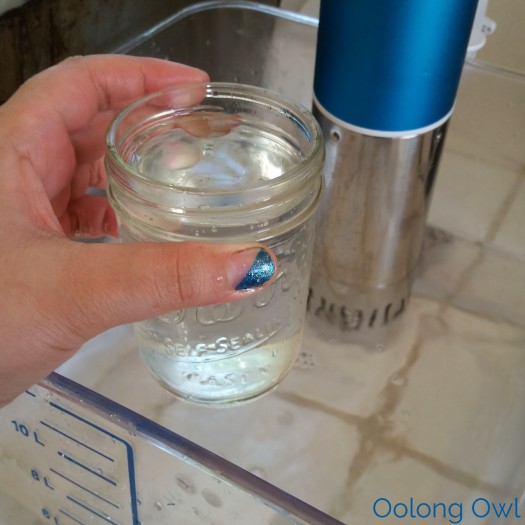
In retrospect, it is best to add a couple jars in case you want to reinfuse the tea leaves. (If you introduce cool filtered water into the sous vide – it takes about 20 minutes to heat to 115F!)
Why not use the heated 115f water in the water bath? Well I could, but I’m steeping expensive gyokuro here and I’m not steeping it in LA sewer tasting tap water, nor wasting 7 liters of filtered water in the sous vide. If you are trying sous vide tea using the water in the circulator and have good water, I could see it would be faster and easier, but be sure to clean your sous vide and container before hand.
Once the sous vide is up to temperature, it took a few minutes for the water in the mason jar to be the same temperature. If you don’t have a probe thermometer, give it 5 minutes to be safe. Time to steep!
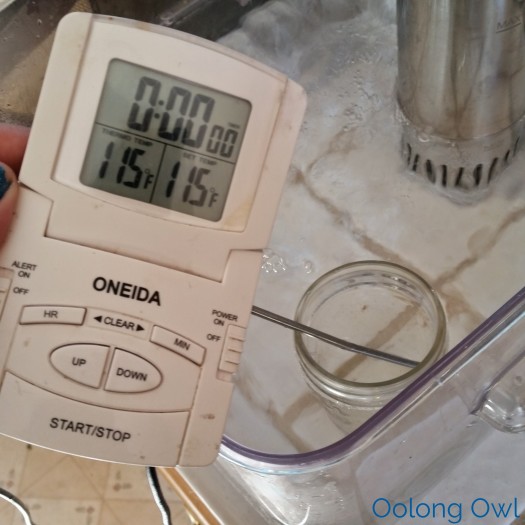
Introduce your leaves to the sous vide heated water. I had 2 grams of gyokuro. I used a big stainless steel infuser to ensure leaf expansion. This is a flaw in the design here, ideally you want to add water to the tea, not the other way around. Agitate the leaves. Set your timer for 2 minutes and steep!
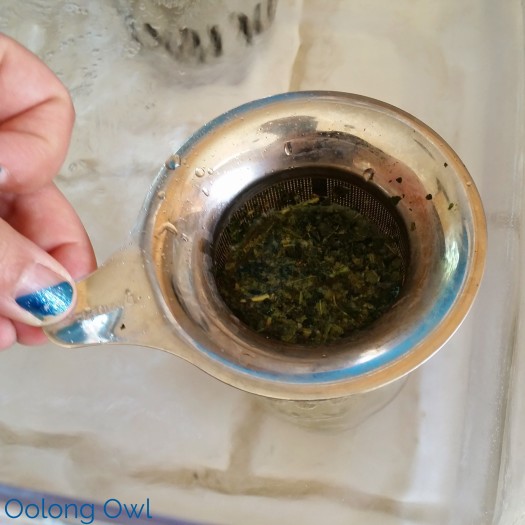
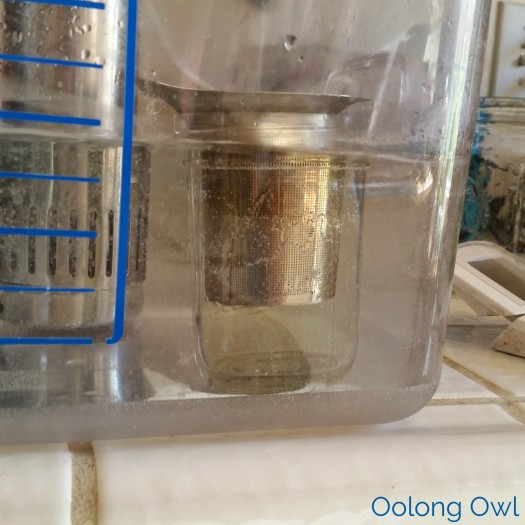
Once time is up, remove the filter. Add the tea leaves in filter to your next jar if going for another round. With the leaves removed, you can simply leave your cup of tea in the sous vide machine – it will stay perfectly hot and not oversteep!
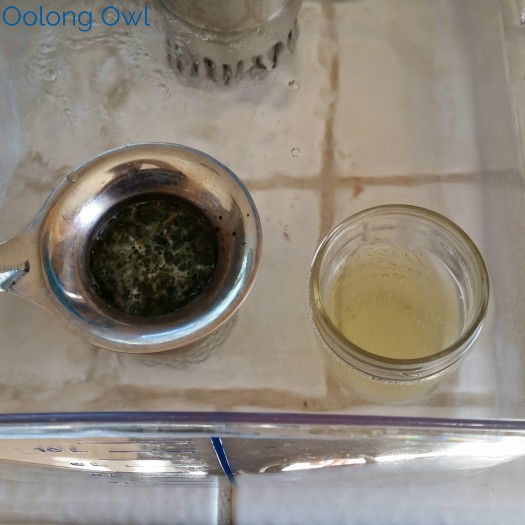
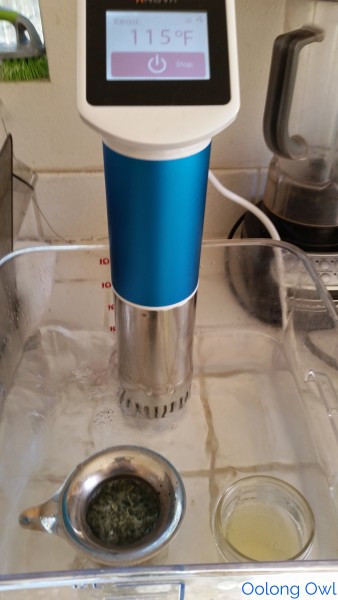
Taste of Sous Vide Tea? Pretty good! The sous vide made a solid cup of gyokuro – it is not over steeped, the drinking temperature is perfect! I got 4 good infusions of my 2 grams of leaf!
With another session and new leaf, the tea tasted the same!
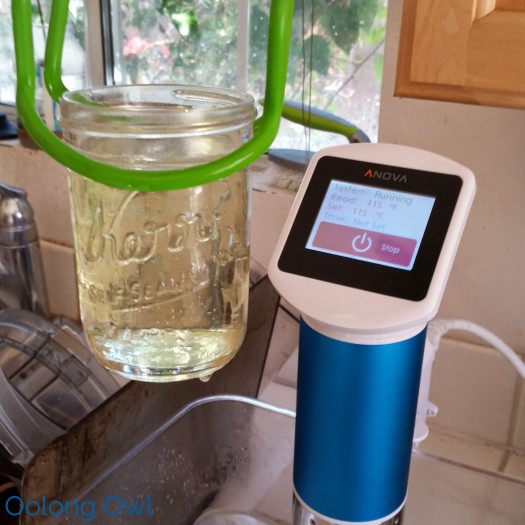
Let’s compare with a regularly steeped cup. Again, I used a mason jar, 2 grams of dry leaf. I cooled the water to 115f, added my gyokuro and steeped for 2 minutes.
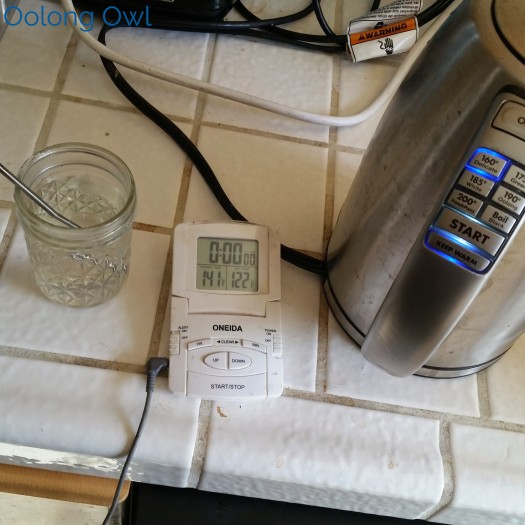
At the end of steeping the temperature dropped 7f. It was a good cup of gyokuro but the flavor was weaker in comparison to the sous vide tea. I picked up more flavor notes in the sous vide tea. Actually, this standard brewed gyokuro tasted just like the 2nd infusion from the sous vide – and this is supposed to be the first infusion!

Verdict
Sous Vide Tea make a precise cup of tea. It is kind of fussy with getting water levels correct. Sous vide is made for vacuum packed things and the unit it self requires an excess of water just to run. Depending on your sous vide machine and vessel, you may not be able to brew single cup tea. I would only make sous vide tea with delicate teas like greens and whites for best results. My Anova One will go up to 99c/210F but I have personally never needed to run it that high. If you are sous vide some vegetables, why not toss in a jar of tea? Or steep up some gyokuro with your 48 hours short ribs?
Though sous vide tea is fairly elaborate of a method, the traditional steeping of tea has a relaxing, fluidity to it. For every day drinker there is a nice feeling of having variety, though I’ve had annoyances of “Man, 2 months ago I made a killer cup and I can’t get it again”. Sous Vide Tea would eliminate steeping errors (though with some errors we cannot avoid – ie, tea age/storage) so it is an interesting idea to test out for types that want to perfect their tea and accurate tea tastings online.
In the end, I think this experiments shows that regardless of how you steep your tea, one needs to ensure they are using the right tools to keep up the desire temperature while infusing.
Finally – hey, someone make a small sous vide stick circulator to heat my water for tea? (for cheap)






